


Christmas Store
The holidays are just around the corner so now is the time to fetch the finest gifts for the Labrador Lover on your Christmas list. We have over 100 gifts $50.00 and under. Visit our Christmas Store.
For the Lab
Bedding
Coats
Collars and Leads
Dog Bowls
Feeding Stations
Spa and Grooming
Toys and Treats
Travel and Accessories
For the Lab Lover
Apparel
Cards and Giftwrap
Fine Accessories
Gifts and All Occasions
Jewelry
Kids Only
For the Lab Home
Artwork
Books
Garden and Outdoor
Home Furnishings
Kitchen Accessories
Pillows, Throws, and Rugs
Gift ServicesGift Boxes
Gift Certificates
If a Disaster Happens - Are you Prepared?
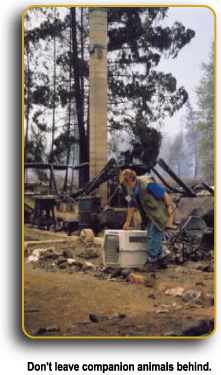
Each year devastating disasters ravage our country, leaving behind human and animal victims. Disasters can be as diverse as a hurricane, fire, flood, earthquake, blizzard, tornado, chemical spill, train derailment, explosion, or any situation that leaves animals helpless and without care. Different disasters require different responses, but whether the disaster is a hurricane, fire or some other event, you may very likely have to evacuate your home. The important thing if you do have to evacuate in the event of a disaster, is to evacuate your pets too. Animals are most often left behind because owners aren’t prepared for such extreme situations. Leaving pets behind, even if you try to create a safe place for them, is likely to result in them being injured, lost, or even worse. Your animals depend on you to be prepared in the event of a disaster situation. So make the necessary arrangements ahead of time. Do not wait until it is too late.
Be Prepared with a Disaster Plan
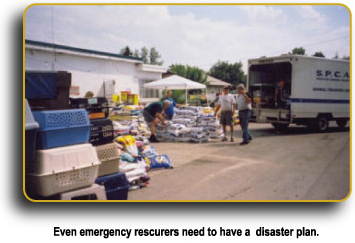
The best way to protect your family and pets from the effects of a disaster is to have an emergency disaster plan. Do not be fooled into thinking that only coastal communities are affected. Evacuations can occur for many different reasons. Even disasters like gas leaks or chemical spills can keep you from tending to your animals for extended periods of time. It is best to be overly cautious during a disaster warning. Many times people have been told that they have to leave their homes for a “short period,” only to find out that they cannot return for days or weeks. Preparing ahead of time and acting quickly is the best way to keep you and your animals out of danger.
Prearrange an Evacuation Site
The most critical step in ensuring the safety of your pets during disasters is making sure that you have a prearranged evacuation site for all of your pets, along with adequate transportation and supplies. It may be difficult if not impossible, to find shelter for your animals in the midst of a disaster, so pre-planning is essential. Do not wait until disaster strikes to do your research. Red Cross disaster shelters cannot accept pets other than service animals that assist people with disabilities because of states’ health and safety regulations and other considerations.
Contact hotels outside your immediate area to check policies on accepting pets and restrictions on number, size and species. Ask if “no pet” restrictions could be waived in an emergency. Keep a list of “pet friendly” places. Ideally, this will be a friend/relative or a pet-friendly hotel that is willing to let your family and animals stay in the event of a disaster. If you have more than one pet, they may be more comfortable together, but be prepared to house them separately. Other possible animal housing options include veterinary hospitals, boarding kennels and to a lesser degree, animal shelters, for they may be already overburdened caring for animals. Keep your pet’s vaccinations updated in case they need to be boarded.
Tornados present an intense situation since your lead time might be more limited than other disasters. Pre-emergency training of your pets to follow you to the basement or place of safety on command can avoid a scramble when a warning occurs. Practice this training regularly by making a game of going quickly to shelter and rewarding them with treats or a favorite toy.
List of Important Emergency Contacts
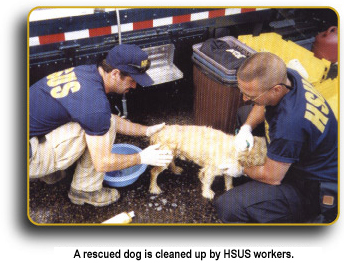
Prepare a list of emergency contacts before a disaster strikes. Include addresses and 24-hour contact numbers, if available. These contacts can be used by rescue personnel responding to a disaster affecting your animals or by you during a disaster or an evacuation.
Keep this emergency contact list and written directions to your home near your telephone and one copy in your animal evacuation kit. This will help you or someone else tell emergency responders how to get to your home if you are in a state of panic or if a person unfamiliar with your area is the only person in your home during a disaster. Your emergency contact list should include:
-
Numbers where you may be reached (pager, cell phone, work phone)
-
Your prearranged evacuation site
-
Local contact person in case of emergency when you are not available
-
Out-of-state contact person in case the disaster is far reaching in your locale
-
Your veterinarian
-
Alternate veterinarian (30-90 miles away, provides boarding)
-
Boarding facility (local)
-
Boarding facility (30-90 miles away)
-
Hotels that allow pets (90 mile radius)
-
Local Animal Control
-
Local Police Department
-
Local Fire Department
-
Local Public Health Department
-
Local Animal Shelter
-
Local Red Cross Chapter
-
Local SPCA
-
Local Humane Society
-
United States Department of Agriculture Missing Pet Network
Evacuation Essentials
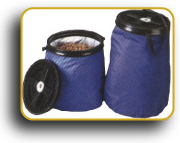
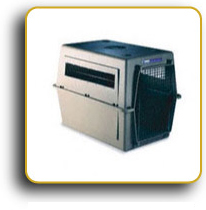
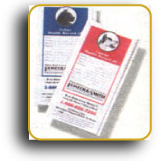
Whether you are away from home for a day or a week, you’ll need essential supplies. Consult your veterinarian for advice on making a first aid kit that is appropriate for your individual animals and ask them to advise you as to the administration of any needed medications and anticipated first aid procedures. It is important that you become familiar with the items in your kit and their uses. The evacuation kit should be assembled in an easy-to-carry, waterproof container. Keep the evacuation kit in an accessible place away from areas with temperature extremes. Replace the food, water, and medications as often as needed to maintain their quality and freshness and in accordance with the expiration dates. If needed, indicate medications that are stored elsewhere due to temperature requirements such as refrigeration. Your evacuation kit should include:
-
2-week supply of water in plastic gallon jugs
-
2-week supply of food in waterproof containers (dry, canned; manual can opener and spoon)
-
Non-spill food and water dishes
-
First aid kit and manual (see below)
-
Nutritional supplements (helps stimulate appetite and get nutrition into stressed animals)
-
Records
-
Copy veterinary records including vaccination, rabies certificate and medical history, along with information on any behavior problems.
-
Provide proof of ownership, microchip/tattoo information and include current photos of you with your pets to help you reclaim your pets in case they get lost.
-
List of each one of your animals and their age, sex, color, and distinguishing characteristics.
-
-
Instructions
-
Medications: List each animal separately, including dose and frequency for each medication. Provide veterinary and pharmacy contact information for refills.
-
Diet: Record the diet for each individual animal, including what not to feed in case of allergies.
-
-
Cage/carrier for each animal labeled with your contact information
-
Leash, collar or harness for each animal

-
Pooper scoop baggies
-
Stakes and tie-outs
-
Paper and cloth towels
-
Newspapers (bedding)
-
Favorite toys, treats, blankets to make pets feel comfortable

-
Flashlight and batteries
-
Radio (battery or solar operated)
-
Trash bags
-
Emergency contact list
-
Maps of local area and alternate evacuation routes (in case of road closures)
-
Flotation vest
-
Emergency cash
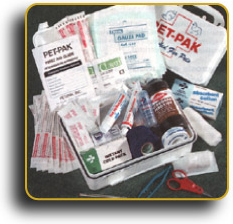
First Aid Kit
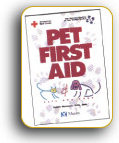 The items below serve only as an example of what may be included in a pet’s first aid kit. Check with your veterinarian for suggestions for your first aid kit.
The items below serve only as an example of what may be included in a pet’s first aid kit. Check with your veterinarian for suggestions for your first aid kit.
-
First Aid Manual
-
Latex gloves
-
Saline solution
-
Towel and washcloth
-
Antibiotic ointment
-
Elastic Bandage rolls
-
Bandage scissors
-
Bandage tape
-
Antibiotic eye ointment
-
Anti-diarrheal tablets or liquid
-
Eye rinse (sterile)
-
Gauze pads and rolls

-
Tweezers
-
Thermometer (digital)
-
Syringe or eyedropper
-
Muzzle
-
Cotton-tipped swabs
-
Popsicle sticks (splints)
-
Hydrogen peroxide
-
Betadine or Nolvansan (scrub and solution)
-
Isopropyl alcohol/alcohol prep pads
-
Styptic powder
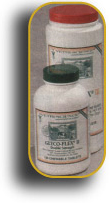
-
Liquid dish detergent
-
Sterile lubricant
-
Tourniquet
-
Non-adherent bandage pads
-
Measuring spoons
-
Medications
-
Cotton bandage rolls
-
Activated charcoal (liquid)
-
Extra collar and leash
Know What to Do as a Disaster Approaches
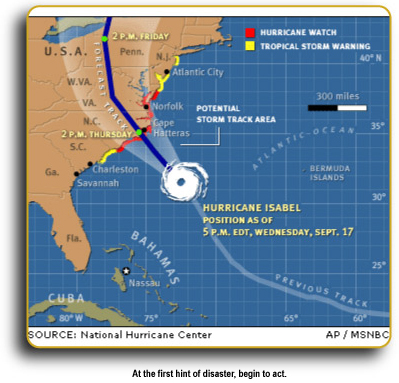
Often storm watches are issued hours, even days in advance. At the first hint of disaster, begin to act. Bear in mind that animals react differently under stress. The most trustworthy pets might panic, hide, try to escape, even bite or scratch. Don’t leave animals unattended anywhere they can run off. When outside your home and car, keep dogs securely leased. Make sure all animals are wearing collars with identification. You can make temporary tags or put duck tape on the back of your pet’s collar and print your information with an indelible pen. Identification should provide your name, home address, a phone number where you can be reached, and an out- of-state phone number of someone that you will be in contact with during or soon after the disaster/evacuation. If possible, include your veterinarian’s name, location, and phone number. Plan to evacuate your family and pets as early as possible. By leaving early, you will decrease the chance of becoming victims of the disaster.
-
Check to be sure your pet disaster supplies are ready and updated.
-
Bring all pets into the house so you won’t have to search for them.
-
Make sure all animals are wearing collars with some form of identification securely fastened.
-
Call ahead to confirm emergency shelter arrangements for you and your pets.
-
Fill your car with gas.
-
Load your larger animal crates/carriers into your vehicle. These will serve as temporary housing if need be.
-
Load the pet evacuation kit and supplies into your vehicle.
-
Place pets inside individual transportable carriers in vehicle.
-
Evacuate with your pets-ASAP!
In Case You Are Not At Home
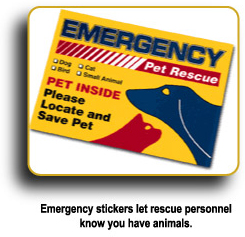
You may not be home when the evacuation order comes. Find out if a trusted neighbor would be willing to take your pets and meet you at a prearranged location. This person should be comfortable with your pets, know where they are likely to be, know where your pet disaster supply kit is kept, and have a key to your home. It is suggested that you sign a letter that releases your neighbor from responsibility should one of your pets become injured and sign a veterinary medical treatment authorization form. Pre-place stickers on front and back house doors to notify neighbors, fire fighters, police, and other rescue personnel, that animals live on your property.
After the Disaster
-
Survey the area inside and outside your home to identify hazards and dangerous material, contaminated water, downed power lines or other hazards.
-
Release pets indoors only. They could encounter dangerous debris or wildlife if they are allowed outside unsupervised and unrestrained.
-
Familiar scents and landmarks may have changed, and this can confuse your pets.
-
Reintroduce food in small servings, gradually working up to full portions is your pets have been without food for a prolonged period of time.
-
Allow uninterrupted rest/sleep for all pets to recover from the trauma and stress.
-
Give your pets time to settle back into their routines. Consult your veterinarian if any behavior problems persist.
-
Enjoy your pets knowing they are safer thanks to your forethought.
Planning for Animals in Disasters: Web sites
American Veterinary Medical Association
 Can You Spot The Holiday Hazards?
Can You Spot The Holiday Hazards?It’s easy for pets, especially Labradors, to get into trouble during the holidays. You may get so busy that you lose track of what is going on with your dog.
Click here to learn more about: "Can You Spot The Holiday Hazards?"

Would you like to see your Lab pictured here? Send us images of your Lab and we may include them on our Home Page!
Labrador Links
The Verstaile Lab
History of the Lab
Advice
Travel
Featured Labs
Featured Artists
.jpg)

